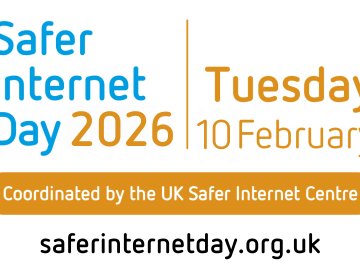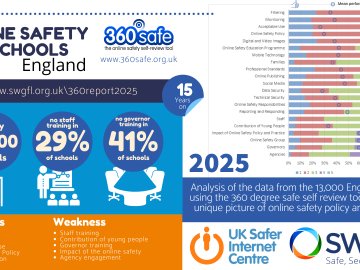The COVID-19 pandemic has resulted in huge changes to the established system. A major part of this was school closures and the introduction to remote learning. Taking the classroom away from the school grounds and placing it in someone’s living room was always going to be a difficult transition phase. Although we are blessed with technology and have access to more resources than ever before, it opens up the question as to whether home learning would ultimately continue school education effectively.
Up until now, we have witnessed first-hand at how productive this way of learning has been. Now, with almost three months since lockdown restrictions came into place, professionals are able to look at how pupils have engaged with remote learning as well as how education as a whole has shifted across the board.
Data has been gathered from the LLAKES (Centre for Learning and Life Chances in Knowledge Economies and Societies) research paper ‘Schoolwork in lockdown: new evidence on the epidemic of educational poverty’ as well as a recent NFER (National Foundation for Educational Research) paper ‘Pupil engagement in remote learning’
The LLAkes findings were based on data taken from a long-standing panel of households that have been polled annually since 2010. The report focuses on a sample of 4559 children and took place during the first month of lockdown.
From the information gathered, the key findings were:
- Pupils spent on average 2.5 hours each day doing school work – though the amount of time of focused educational activity is likely to be lower than this.
- Most home work was assignments, worksheets and watching videos.
- On average, pupils got two pieces of homework each day but there was great disparity between groups and regions.
- The extent of online lessons (work and teaching combined) provided varied considerably. In state schools, this was minimal.
Online Homework
There were also some interesting findings with regards to how schools effectively managed online homework, with particular factors affecting outcomes, including region, economic position and whether it was primary or secondary schools. The key findings were:
- There was little difference in the amount of homework set for pupils entitled to free school meals and those who are not. This is because home work is typically set by class and not economic group. Consequently, there is no disparity in expectation seen between groups.
- Regionally there was some disparity with the amount of online homework set for pupils. London is the region with the highest frequency of online homework whilst Wales was the region that set the least online homework.
- Except for London, there is no notable variance in the amount of homework set per day across English regions.
- The reasons for London being the most frequent user of online homework may link to the well-established and well-developed infrastructure within the capital area.
- The LLAKES study shows that pupils in ‘private education have significantly more access to online learning compared to pupils in maintained schools. There is an argument that private schools have better resources, but this is not necessarily the case. It is more likely linked to schools continuing to charge pupils attendance fees and consequently being held to account by parents to provide the service that they are paying for.
- According to LLAKES, typically about half of the homework undertaken by pupils is checked by teachers. However, in the North East region this is considerably less than other parts of the country.
- NFER report felt secondary schools were more confident in delivering online learning whilst some primary schools did not feel they had the resources or capacity to deliver both face to face and online learning.
How Education Professionals Responded
As well as the households, the NFER study sought the views of education professionals about how effective remote learning had been. The NFER study carried out in 7-17 May 2020 sought the views of 1233 senior leaders and 1821 teacher in state funded primary and secondary schools. The key points that were raised were:
- 63% maintained that schools felt un-prepared for delivering online lessons.
- Schools using established online tools such as virtual learning platforms, rather than school websites, and those communicating directly with pupils had better rates of engagement in learning.
- Disadvantaged pupils were less likely to be engaged in online remote learning. It also identified that engagement with online learning is likely to be lower in schools with highest proportions of disadvantaged pupils.
- Teachers were concerned about the engagement in learning by disadvantaged pupils. Additionally, teachers also had concerns about the low participation in learning exhibited by pupils who have limited or no access to information technology or inappropriate space / environments to work in at home. Many of these pupils may also be disadvantaged. As a result, this study by NFER supports the DFE’s programme to supply laptops to the most vulnerable pupils who do not have access to IT devices in order to promote their engagement in learning.
- The NFER study also highlighted appropriate activities and strategies derived by the education endowment foundation (EIF) that schools can use to maximise the parental engagement in online learning. These include providing practical strategies that parents can follow, including structuring routines. Additionally, the EIF recommends school review the approaches they use to communicate with parents. In particular, they stress the need for parents to feel included in consultations and that they feel comfortable to express their views.
What limitations are there?
Both reports carefully analyse many important aspects in the use of online environments and their impact in providing opportunities for pupils to learn. However, the need to ensure staff are suitably trained and confident to meet their statutory obligations about safeguarding during online contact with pupils still needs to be addressed. This also includes the need to promote appropriate policies and behaviours that maintain teachers’ professional integrity during online contact with pupils.
Similarly, the importance for school leaders, including governors to evaluate the needs for cyber security in online learning needs to be addressed. As part of the review of what can be learned during post-lockdown, leaders may wish to retrospectively evaluate the capacity and capability of the school and its staff to maintain a safe and secure online working environment. E.g. considering which application is best to undertake sensitive staffing or pupil focused discussions with governors or other staff. Leaders may also wish to consider reviewing their policies about information sharing to take account of the opportunities and risks provided by online technology.
You can read the full reports here:
https://www.llakes.ac.uk/research-papers
https://www.nfer.ac.uk/publications-research/
What help is available?
With the research gathered, SWGfL are able to offer some resources and guidance that can address some of the issues raised. As part of our continued work with online safety, our services include:






